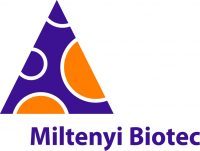LGR5 Monoclonal / PE / DA04-10E8.9
Product Details
| Description | Clone DA04-10E8.9 recognizes the mouse LGR5 antigen, also known as leucine-rich-repeat-containing G-protein–coupled receptor 5 or Gpr49 but not with its close homologues LGR4 or LGR6. LGR5 associates with Wnt-receptors and act as R-spondin receptor thereby playing a central role in the modulation of Wnt/beta-catenin signaling in normal and neoplastic stem cells. Initially described as a highly specific marker for stem cells in the small intestine, colon, hair follicle, stomach, and during kidney development, LGR5 positive cells were also shown to be crucial during the development and progression of cancer. It was shown that LGR5 positive crypt stem cells are the cells-of-origin in intestinal cancer and that CSCs in human colorectal cancer can be identified and isolated based on LGR5 expression. | | |
|---|---|---|
| Conjugate | PE | |
| Clone | DA04-10E8.9 | |
| Target Species | Mouse | |
| Applications | FC | |
| Supplier | Miltenyi Biotec | |
| Catalog # | Sign in to view product details, citations, and spectra | |
| Size | ||
| Price | ||
| Antigen | ||
| Host | ||
| Isotype |
About LGR5
The protein encoded by this gene is a leucine-rich repeat-containing receptor (LGR) and member of the G protein-coupled, 7-transmembrane receptor (GPCR) superfamily. The encoded protein is a receptor for R-spondins and is involved in the canonical Wnt signaling pathway. This protein plays a role in the formation and maintenance of adult intestinal stem cells during postembryonic development. Several transcript variants encoding different isoforms have been found for this gene. [provided by RefSeq, Sep 2015]
The protein encoded by this gene is a leucine-rich repeat-containing receptor (LGR) and member of the G protein-coupled, 7-transmembrane receptor (GPCR) superfamily. The encoded protein is a receptor for R-spondins and is involved in the canonical Wnt signaling pathway. This protein plays a role in the formation and maintenance of adult intestinal stem cells during postembryonic development. Several transcript variants encoding different isoforms have been found for this gene. [provided by RefSeq, Sep 2015]
About PE
Phycoerythrin (PE, R-PE) is a red-emitting fluorescent protein-chromophore complex that can be excited the 488-nm blue, 532-nm green, or 561-nm yellow-green laser with increasing efficiency and captured with a 586/14 nm bandpass filter. PE has an excitation peak at 565 nm and an emission peak at 578 nm. PE is 240kD in size and has an extinction coefficient of ~2x10^6 which makes it one of the brightest fluorophores available and a potent donor upon which to build tandem fluorophores with longer Stoke's Shifts.
Phycoerythrin (PE, R-PE) is a red-emitting fluorescent protein-chromophore complex that can be excited the 488-nm blue, 532-nm green, or 561-nm yellow-green laser with increasing efficiency and captured with a 586/14 nm bandpass filter. PE has an excitation peak at 565 nm and an emission peak at 578 nm. PE is 240kD in size and has an extinction coefficient of ~2x10^6 which makes it one of the brightest fluorophores available and a potent donor upon which to build tandem fluorophores with longer Stoke's Shifts.
Experiment Design Tools
Panel Builders
Looking to design a Microscopy or Flow Cytometry experiment?
Validation References
| PMID 9920770 | |
|---|---|
| PMID 15509778 | |
| PMID 17934449 | |
| PMID 18849992 | |
| Additional Sources |

|
Reviews & Ratings
| Reviews |
|---|
Looking for more options?
545 LGR5 antibodies from over 23 suppliers available with over 73 conjugates.




